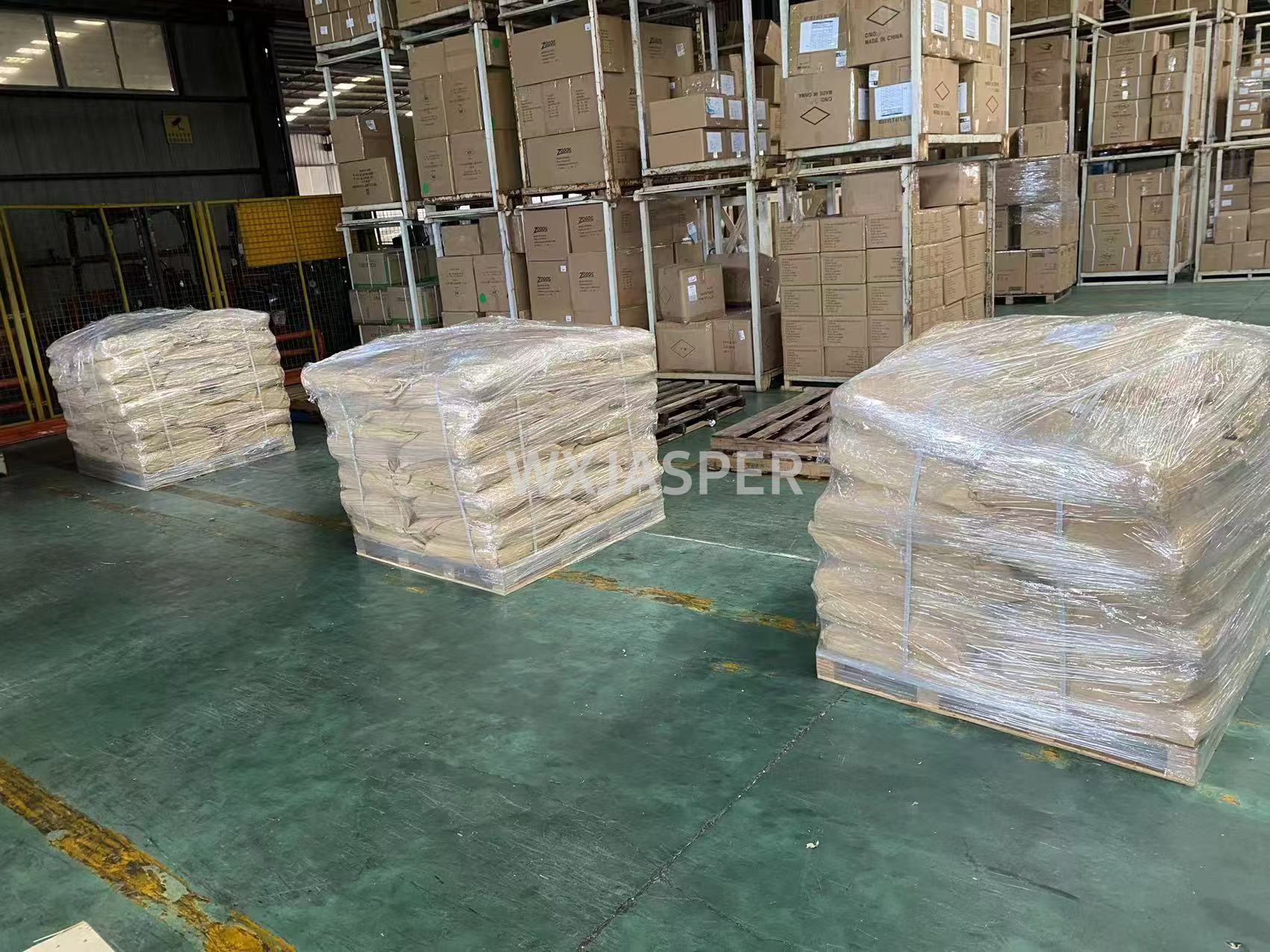Product Details
CasNo: 9005-08-7
MF: (C2H4O)n.C36H70O3
Appearance: powder
Delivery Time: 15 days
Packing: 25kg/bag
Purity: 98.5%
1. Basic Information
- Synonyms: Poly(ethylene glycol) distearate; PEG-150 Distearate; Polyethylene Glycol Diester of Stearic Acid; PEG-150 DS; 638 Thickener
- CAS Number: 9005 - 08 - 7
C17H35COO(CH2CH2O)nCOC17H35
n
- Molecular Weight: Approximately 332.52 (calculated based on the formula unit
C19H40O4
- , but it actually varies due to different degrees of polymerization)
- IUPAC Name: Poly(oxy - 1,2 - ethanediyl), α - (1 - oxooctadecyl) - ω - ((1 - oxooctadecyl)oxy) - (150 mol EO average molar ratio)
2. Physical and Chemical Properties
- Appearance: It presents as white to off - white solid flakes or powder at room temperature.
- Melting Point: The melting point typically ranges from 35 to 37 °C. This relatively low melting point allows it to melt and disperse easily when heated, which is beneficial for its application in various formulations.
- Solubility: It can be dissolved in isopropyl alcohol, glycerol, and gasoline - type solvents. It is dispersible in water, and when heated, it can be completely dissolved in water, ethanol, and other solvents. This solubility property makes it highly adaptable in different systems, whether they are oil - based or water - based.
- pH Value (5% Aqueous Solution): The pH value of a 5% aqueous solution of PEG - 150 distearate is in the range of 5 - 8, indicating its relative neutrality in an aqueous environment. This property is important as it ensures compatibility with a wide range of other ingredients in formulations without causing significant pH - related issues.
- Cloud Point: The cloud point is around 80 - 85 °C. The cloud point is an important parameter for non - ionic surfactants like PEG - 150 distearate, as it affects the clarity and stability of solutions at different temperatures.
3. Quality Indicators
- Active Substance Content: The active substance content is usually 98 ± 1%. High - purity products are crucial for ensuring consistent performance in different applications. Precise control of the active substance content guarantees that the product can effectively exert its functions such as thickening and emulsifying.
- Viscosity (20 °C, 10% Aqueous Solution): The viscosity is ≥ 80000 cps. The high viscosity in an aqueous solution at a certain concentration reflects its excellent thickening ability, which is one of its main functions in many industries.
- Arsenic Content: The arsenic content is ≤ 10 ppm. Stringent control of heavy metal impurities like arsenic is essential, especially for products used in cosmetics and personal care products, to ensure user safety.
- Lead Content: The lead content is ≤ 40 ppm. Similar to arsenic, low lead content is required to meet the safety standards for products that may come into contact with the human body.
4. Functions and Applications
- It has excellent thickening properties and is widely used as a thickener for various water - phase products. For example, in the formulation of shampoo, liquid soap, and liquid detergent, it can significantly increase the product's consistency. By adding an appropriate amount of PEG - 150 distearate, the viscosity of these products can be adjusted to a more suitable level, which is convenient for users to use and also helps to improve the product's appearance and feel.
- As an O/W (oil - in - water) type emulsion stabilizer, it is a widely used industrial emulsifier. In the cosmetics industry, it can help emulsify oil - based ingredients in creams, lotions, and other products, making the product more stable and homogeneous. In the textile industry, it can be used in textile finishing agents to improve the dispersion and stability of oil - based substances in water - based systems. In the paint industry, it can play a role in emulsifying pigments and resins, improving the quality and performance of coatings.
- Conditioning Performance:
- It has a conditioning and softening effect on hair. When used in hair - care products such as shampoo and conditioner, it can prevent hair from drying out and reduce static electricity. It forms a thin film on the hair surface, making the hair smoother and more manageable, improving the overall hair quality and appearance.
5. Usage and Dosage
- Usage Method: When using, it can be first dissolved in boiling water. Heating helps to accelerate its dissolution and dispersion in the solvent, ensuring better mixing with other ingredients in the formulation.
- Dosage: The general dosage is 0.2% - 5%, and the specific amount depends on the required viscosity and the nature of the product. For example, in shampoo and other hair - care products, the recommended dosage is 0.2% - 1%. Appropriate adjustment of the dosage according to actual needs can achieve the best performance of the product without causing negative impacts such as excessive thickening or affecting the stability of the formula.
6. Packaging and Storage
- Packaging: Usually, it is packaged in 25 - kg bags. The packaging material should be able to prevent moisture absorption, oxidation, and contamination to ensure the quality of the product during storage and transportation.
- Storage: It should be stored in a cool, dry place and sealed. Avoid storing it together with oxidants and acids. High - temperature and high - humidity environments may affect its physical and chemical properties, and contact with oxidants and acids may cause chemical reactions, reducing the product's quality and performance. Under proper storage conditions, the product can maintain its quality for a relatively long time.


